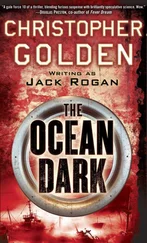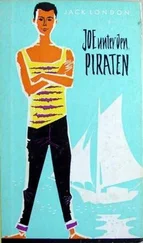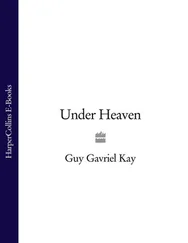Diplomacy Fail
After Beijing, Trump moved on to the rest of his trip. He was set to attend the Asia-Pacific Economic Cooperation (APEC) summit in Da Nang, Vietnam, and make an official state visit to Hanoi. He was then to go to the Philippines, where he would meet President Rodrigo Duterte and then attend the US-Association of Southeast Asian Nations Summit and the East Asia Summit. The schedule was packed with bilateral meetings with the leaders of countries from all over the region.
American leaders had learned over the years that a huge part of successful diplomacy in Asia was doing the basic work of attending these events and showing that Ameri ca was present and attentive to the region’s issues. The annual APEC summit was where the CEOs of each country were supposed to convene to discuss the business of state. The East Asia Summit, also held annually, was more focused on regional diplomacy. Even in the Obama administration, just getting the president to Asia for one of these hallmark events was a major lift that occasionally didn’t come off. The Obama administration joined the East Asia Summit in 2011 and Obama attended every year except 2013, due to the government shutdown.
At the APEC CEO Summit on November 12 in Da Nang, Trump gave what was billed as a major speech on economics, in which he declared the United States would never return to the Trans-Pacific Partnership. Since he had withdrawn the United States from TPP ten months prior, the other eleven countries had moved forward on it without the United States. The US move also strengthened China’s pitch for its own regional trade deal, called the Regional Comprehensive Economic Partnership, which demanded less from countries in terms of labor standards and adherence to the rule of law. Beijing was rushing to fill the void Trump had left.
In his speech, Trump offered to make bilateral trade deals with any country “that will abide by the principles of fair and reciprocal trade,” adding, “What we will no longer do is enter into large agreements that tie our hands, surrender our sovereignty, and make meaningful enforcement practically impossible. Instead, we will deal on a basis of mutual respect and mutual benefit. We will respect your independence and your sovereignty.”
After Vietnam, Trump traveled to the Philippines. He arrived on November 12 and met with Duterte in Manila on November 13. In his remarks to the press, Trump praised the weather in the Philippines (“pretty good”), thanked Duterte for the music and dance show at dinner the previous night (“tremendous talent”), and laughed when the Filipino strongman called the journalists in the room “spies.” To the journalists, it wasn’t funny because Duterte had publicly condoned the killing of journalists and had been under fire for overseeing thousands of extrajudicial killings in his administration’s heavy-handed “war on drugs.”
The East Asia Summit was to be held the next day in the nearby city of Angeles. But Trump didn’t want to go. Before he left Washington, I had received a tip that Trump would skip the event. Even before his tour had begun, Trump had been complaining about the length of the trip, and the White House didn’t want to push the issue with him. I wrote a column on October 27 about Trump’s plan to skip the event, and in the piece I quoted former US ambassador to Burma Derek Mitchell saying, “Multilateralism in Asia is often just about showing up, but even that appears to be hard for him.”
The next day, the White House had announced that Trump had changed his mind; now he would attend the summit. I wrote another column about the reversal, giving Trump credit for doing the right thing. “The reversal tells us something very important: Trump is learning about and places a high priority on Asia,” Southeast Asia expert Ernest Bower told me. “Credit to him and his national security team on this adjustment.”
Bower spoke too soon. Trump and his entourage did travel to Angeles on November 14 to attend the East Asia Summit, which was his last stop before flying home to Washington. But the summit’s main plenary session, with all the heads of state, was running about an hour late. “Fuck it, let’s go,” Trump told his aides. He boarded Air Force One and ordered the crew to take off, leaving Tillerson to sit in his chair.
Trump would skip all the remaining meetings of the East Asia Summit in his presidency. Apparently he had had enough of diplomatic conferences in Asia. But he never forgot the good times he had in Beijing.
A year later, Trump was still talking about how, while in Beijing, he praised Xi’s decision to grant himself a never-ending term as president by calling him “King.” “He said, ‘But I am not king, I am president.’ I said ‘No, you’re president for life, and therefore you’re king,’” Trump recounted. “He said, huh. He liked that. I get along with him great.”
“Meeting the Right Partners”
While the Trump delegation was in Beijing, Jared Kushner hosted a meeting that had nothing to do with US government business at the US embassy in the Chinese capital. This meeting, unlike the Trump-Xi conference unfolding nearby, was never announced; to this day, Kushner has never publicly commented on it. His silence is understandable, given the gross conflict of interest it represented—and the pattern of improprieties of which it was a part.
Hosted by Ambassador Terry Branstad, the “casual lunch” was filled with senior Chinese private equity executives; one, Hugo Shong, a prominent Chinese venture capitalist, confirmed his attendance afterward to CNBC. He did not mention that, at the time, Kushner was seeking out Chinese capital investments for a whole host of projects he was involved in, including in the Kushners’ family real estate business. He didn’t have to.
The Kushners, always on the hunt for investment dollars, should have known using the embassy to conduct this meeting was a glaring conflict of interest. Jared had failed to learn the lesson after his disastrous meeting during the transition with the leader of Anbang Insurance Group in New York. Nor had he been chastened by the fact that, in May 2017, the Washington Post had revealed that Kushner’s sister Nicole Kushner Meyers had been in Beijing hawking New Jersey apartments by promising Chinese investors they could get special EB-5 visas to live in the United States. “Invest $500,000 and immigrate to the United States,” her brochure read. The Securities and Exchange Commission later opened an investigation into the scheme.
The Kushners may have learned about that government money-for-visas program from the Trumps. In 2016, while Trump was running for office, he licensed his name to the Trump Bay Street project in Jersey City. His partners there reportedly raised $50 million from one hundred Chinese investors, or about $500,000 each, the minimum investment mandated by the EB-5 visa application process.
Ivanka’s interests were clear; she had been working to bring her brand to China for many years. In 2012, Ivanka said the Trump Organization had a team based in Shanghai. “There’s such interest in the brand being here,” she said to the Wall Street Journal. “We’re really ramping up our commitment to meeting the right partners and finding the right opportunities.”
The Beijing meeting was not the beginning or end of the Kushners’ efforts to monetize their privileged position in the Trump-China nexus. In June 2017, Ivanka had gotten some of her trademark applications in China approved for the third time since her father was elected. Her personal brand also depended heavily on Chinese labor. Of the 838 items listed on her merchandise website, 364 were made in China, according to PBS. That same month, she was also spotted dining with Alibaba chief Jack Ma at Fiola Mare, a high-end Italian restaurant on the Georgetown waterfront.
Читать дальше











